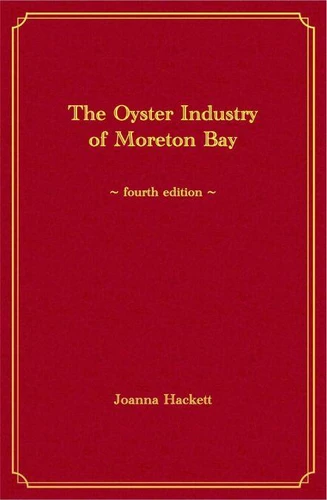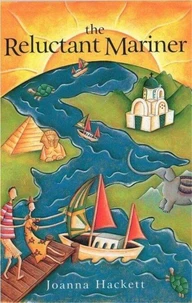Nouveauté
The Oyster Industry of Moreton Bay. Histories of the Bay Islands, Moreton Bay, #2
Par :Formats :
Disponible dans votre compte client Decitre ou Furet du Nord dès validation de votre commande. Le format ePub est :
- Compatible avec une lecture sur My Vivlio (smartphone, tablette, ordinateur)
- Compatible avec une lecture sur liseuses Vivlio
- Pour les liseuses autres que Vivlio, vous devez utiliser le logiciel Adobe Digital Edition. Non compatible avec la lecture sur les liseuses Kindle, Remarkable et Sony
 , qui est-ce ?
, qui est-ce ?Notre partenaire de plateforme de lecture numérique où vous retrouverez l'ensemble de vos ebooks gratuitement
Pour en savoir plus sur nos ebooks, consultez notre aide en ligne ici
- FormatePub
- ISBN8231576401
- EAN9798231576401
- Date de parution02/08/2025
- Protection num.pas de protection
- Infos supplémentairesepub
- ÉditeurWalzone Press
Résumé
Within Moreton Bay lie many small islands, protected by the large barrier islands of Moreton and North and South Stradbroke. Some of these small islands are inhabited, with thriving communities, while others only appear at low tide, being little more than mangroves and mud. Even so, these mud islands are vitally important for the continued health of the waters and wildlife of Moreton Bay. The village islands of Russell, Karragarra, Lamb and Macleay are known collectively as the Southern Moreton Bay Islands.
In 1842, when the Moreton Bay Penal Colony was closed, Brisbane and its surrounds were opened up to free settlement. Primary industries such as timber cutting, fishing and oyster farming flourished and were integral to the economic development of Southeast Queensland. Until the early 1970s, fruit and vegetable production and fishing supported the small Island communities. In the early years, the Islands' isolation and complete lack of facilities fostered a strong community spirit of self-reliance, volunteering and care for others.
Controversial subdivisions began in the late 1960s, and, in 1973, the Redland Shire Council (now Redland City Council) was granted control of the Bay Islands by the State Government. This second volume in the series, Histories of the Bay Islands, Moreton Bay, documents the events and personalities central to the formation of the Moreton Bay oyster industry.
In 1842, when the Moreton Bay Penal Colony was closed, Brisbane and its surrounds were opened up to free settlement. Primary industries such as timber cutting, fishing and oyster farming flourished and were integral to the economic development of Southeast Queensland. Until the early 1970s, fruit and vegetable production and fishing supported the small Island communities. In the early years, the Islands' isolation and complete lack of facilities fostered a strong community spirit of self-reliance, volunteering and care for others.
Controversial subdivisions began in the late 1960s, and, in 1973, the Redland Shire Council (now Redland City Council) was granted control of the Bay Islands by the State Government. This second volume in the series, Histories of the Bay Islands, Moreton Bay, documents the events and personalities central to the formation of the Moreton Bay oyster industry.
Within Moreton Bay lie many small islands, protected by the large barrier islands of Moreton and North and South Stradbroke. Some of these small islands are inhabited, with thriving communities, while others only appear at low tide, being little more than mangroves and mud. Even so, these mud islands are vitally important for the continued health of the waters and wildlife of Moreton Bay. The village islands of Russell, Karragarra, Lamb and Macleay are known collectively as the Southern Moreton Bay Islands.
In 1842, when the Moreton Bay Penal Colony was closed, Brisbane and its surrounds were opened up to free settlement. Primary industries such as timber cutting, fishing and oyster farming flourished and were integral to the economic development of Southeast Queensland. Until the early 1970s, fruit and vegetable production and fishing supported the small Island communities. In the early years, the Islands' isolation and complete lack of facilities fostered a strong community spirit of self-reliance, volunteering and care for others.
Controversial subdivisions began in the late 1960s, and, in 1973, the Redland Shire Council (now Redland City Council) was granted control of the Bay Islands by the State Government. This second volume in the series, Histories of the Bay Islands, Moreton Bay, documents the events and personalities central to the formation of the Moreton Bay oyster industry.
In 1842, when the Moreton Bay Penal Colony was closed, Brisbane and its surrounds were opened up to free settlement. Primary industries such as timber cutting, fishing and oyster farming flourished and were integral to the economic development of Southeast Queensland. Until the early 1970s, fruit and vegetable production and fishing supported the small Island communities. In the early years, the Islands' isolation and complete lack of facilities fostered a strong community spirit of self-reliance, volunteering and care for others.
Controversial subdivisions began in the late 1960s, and, in 1973, the Redland Shire Council (now Redland City Council) was granted control of the Bay Islands by the State Government. This second volume in the series, Histories of the Bay Islands, Moreton Bay, documents the events and personalities central to the formation of the Moreton Bay oyster industry.






